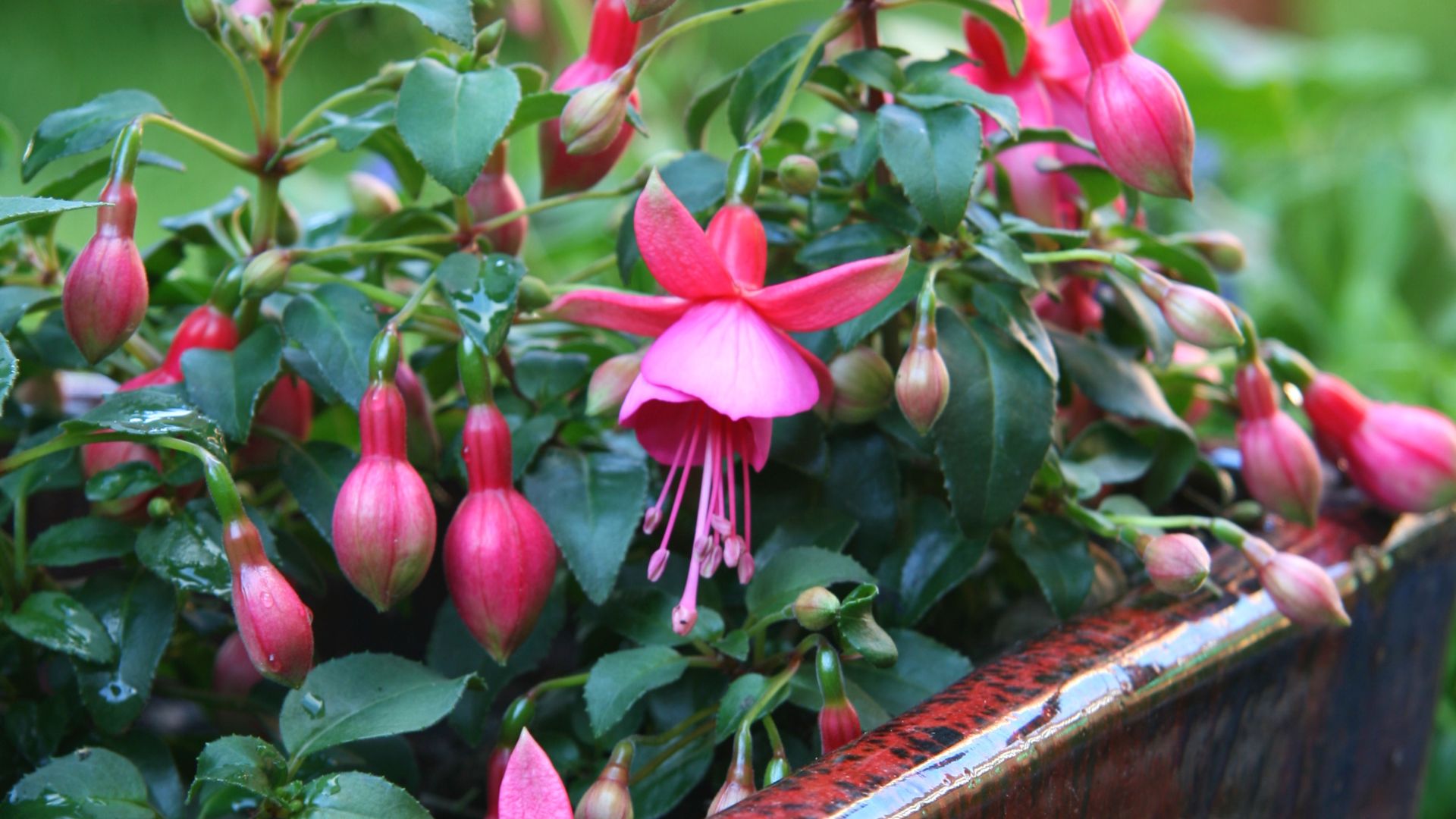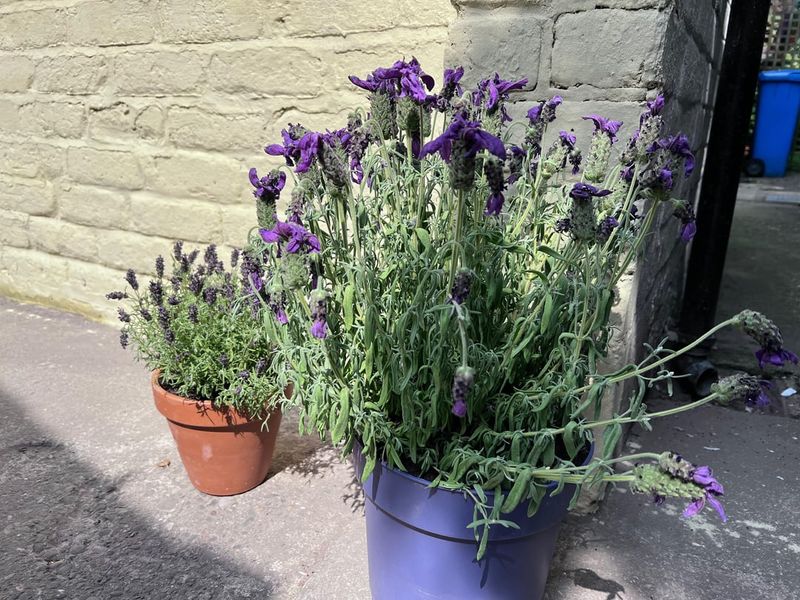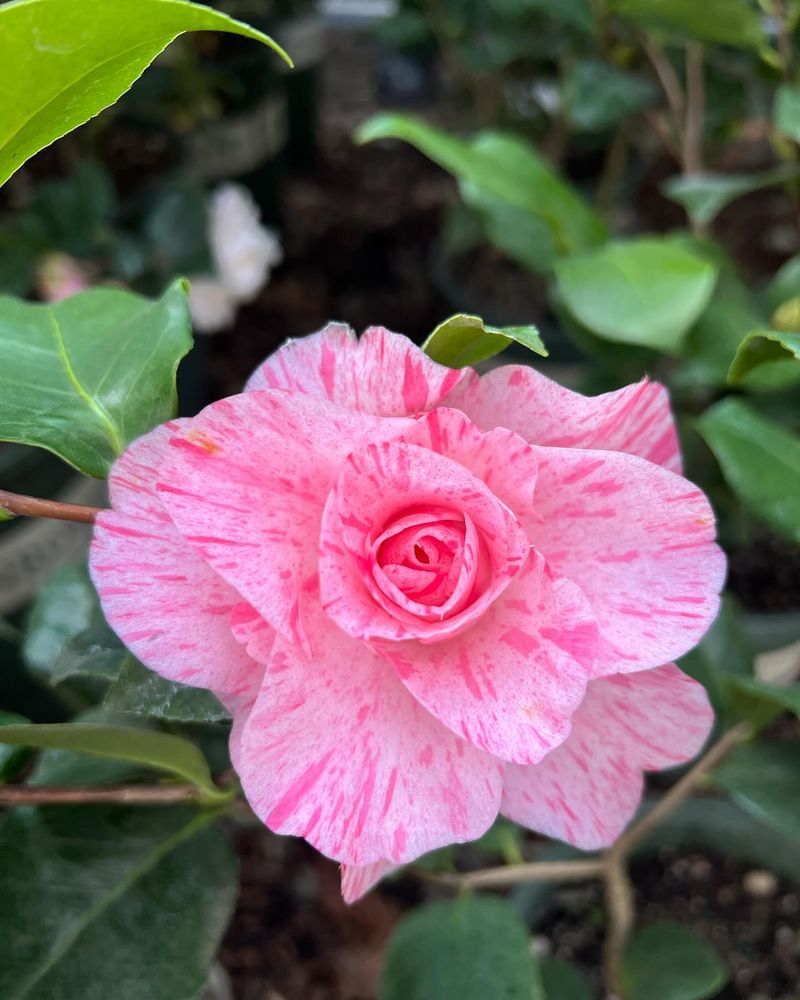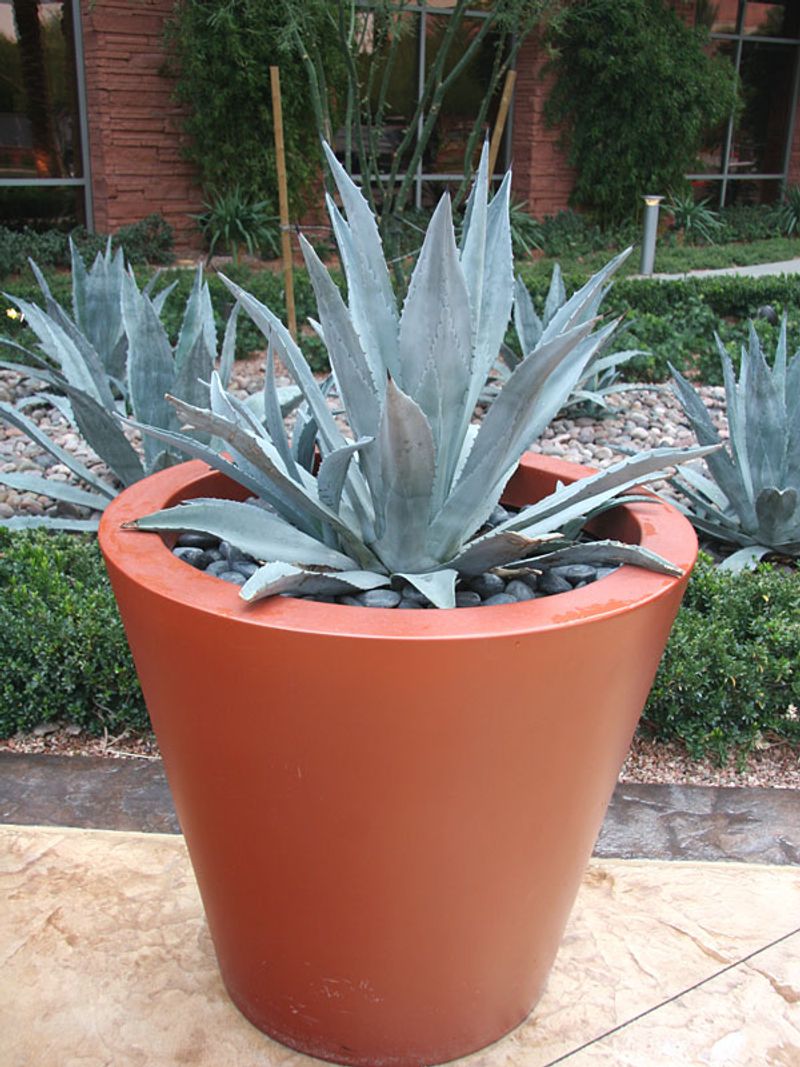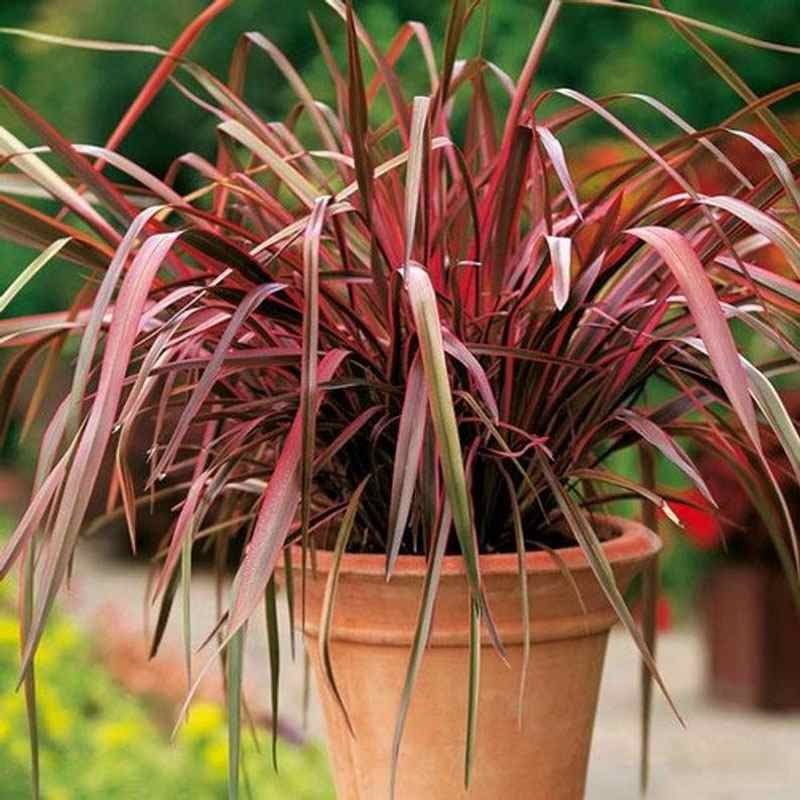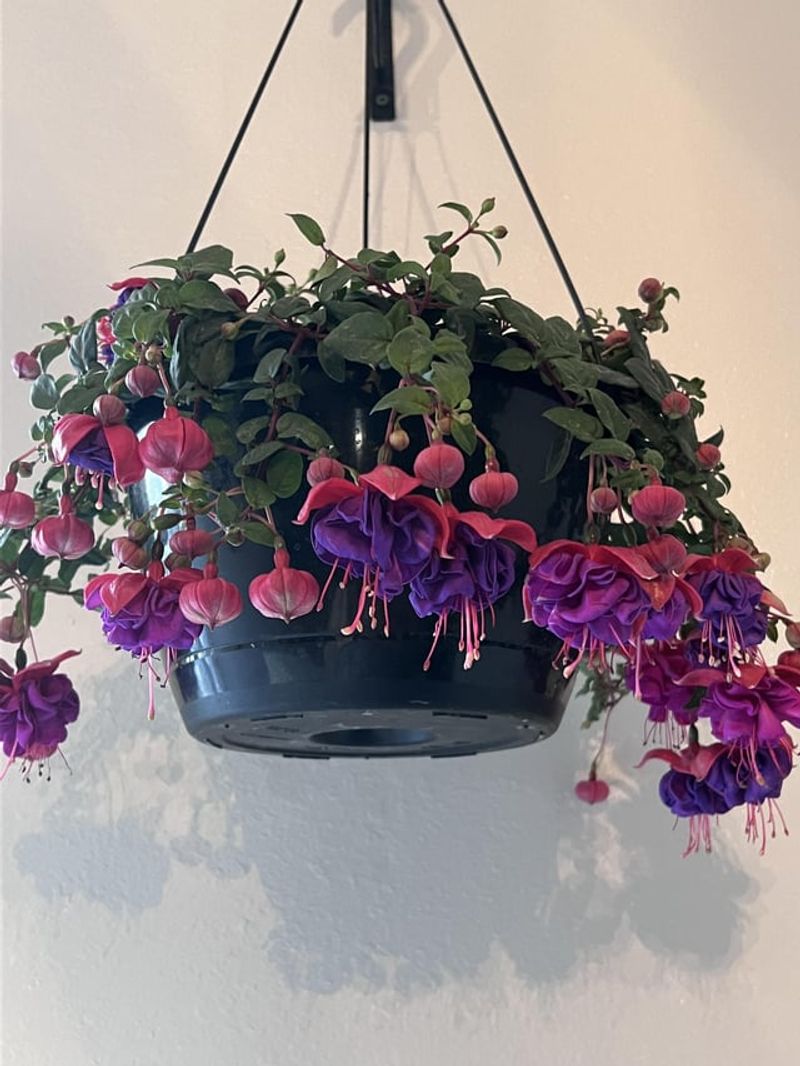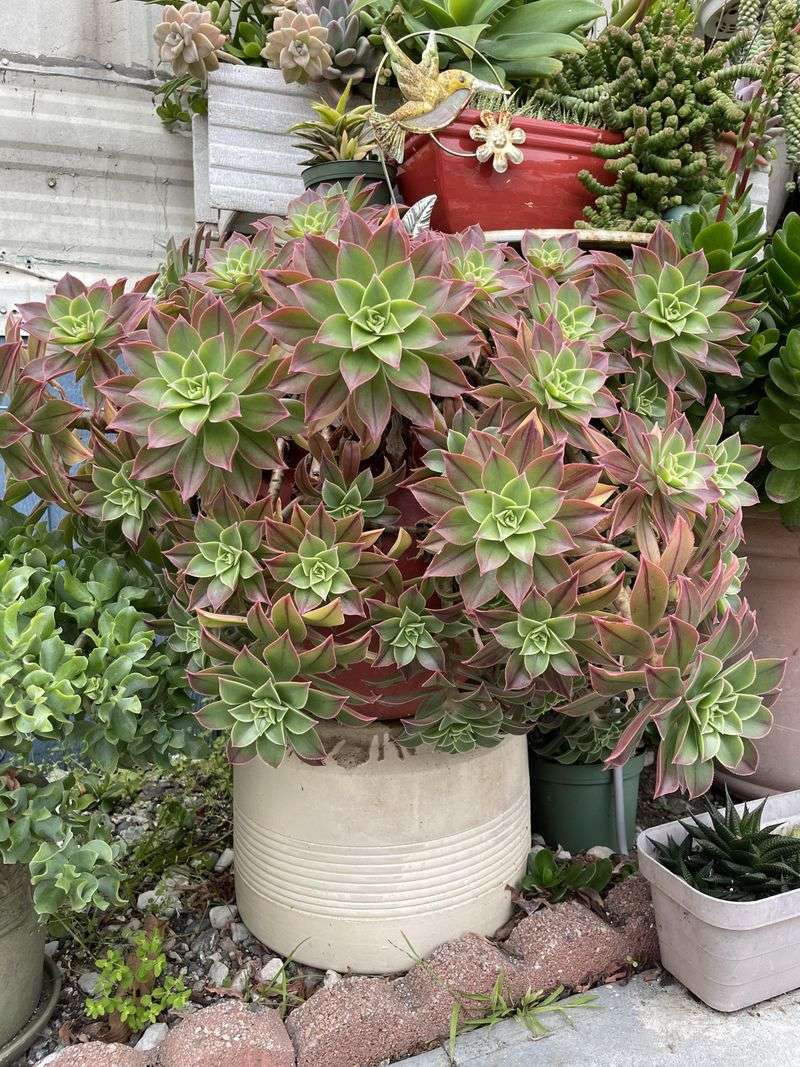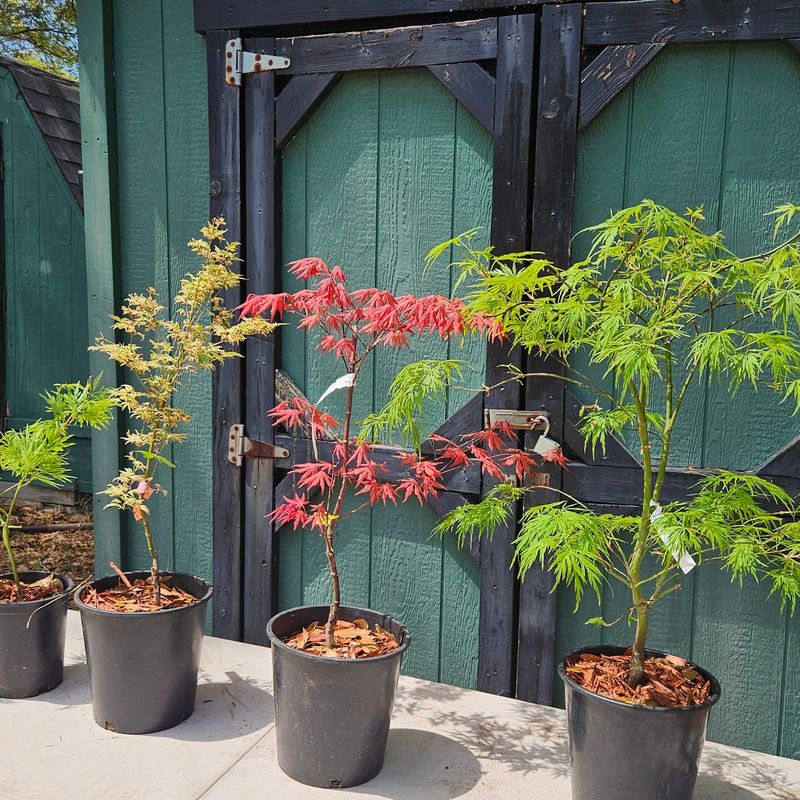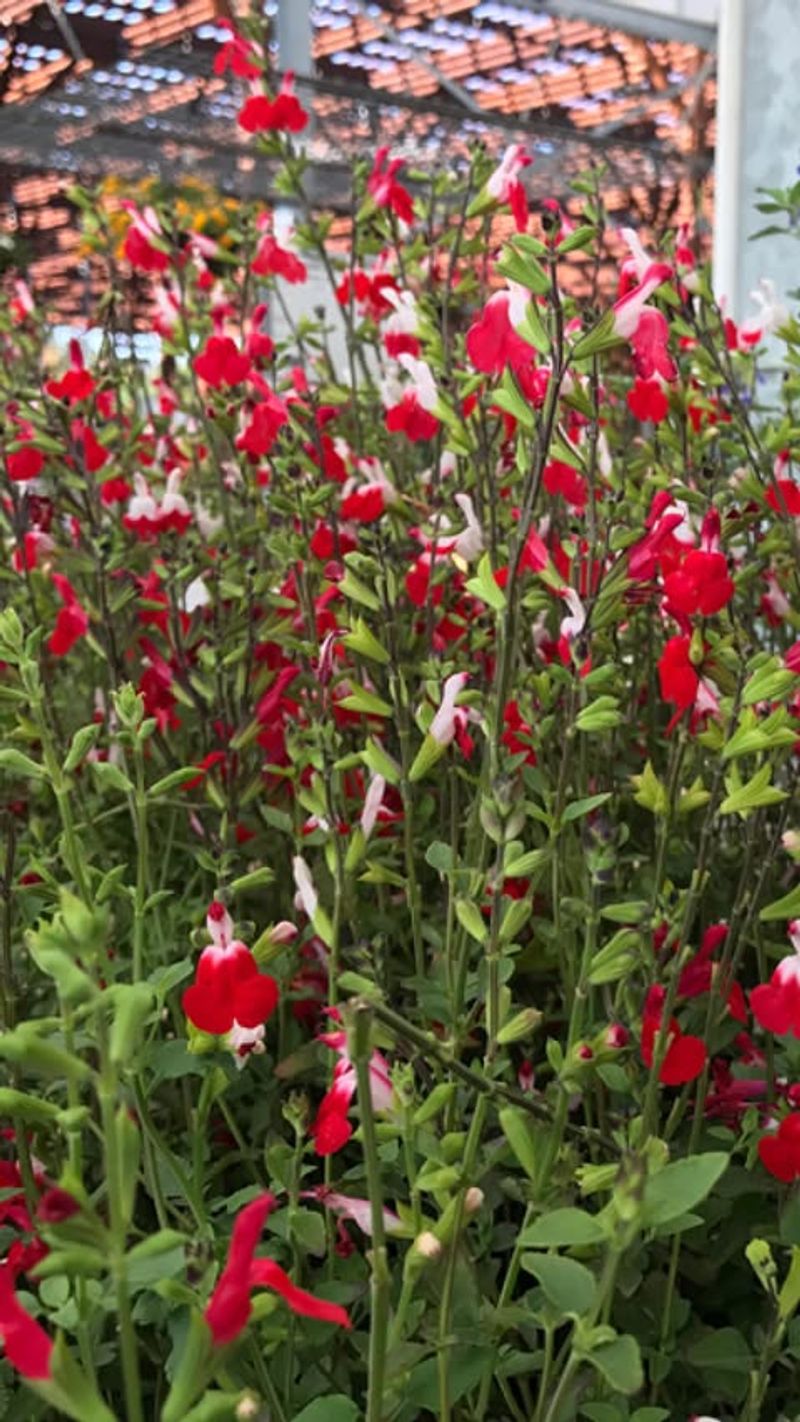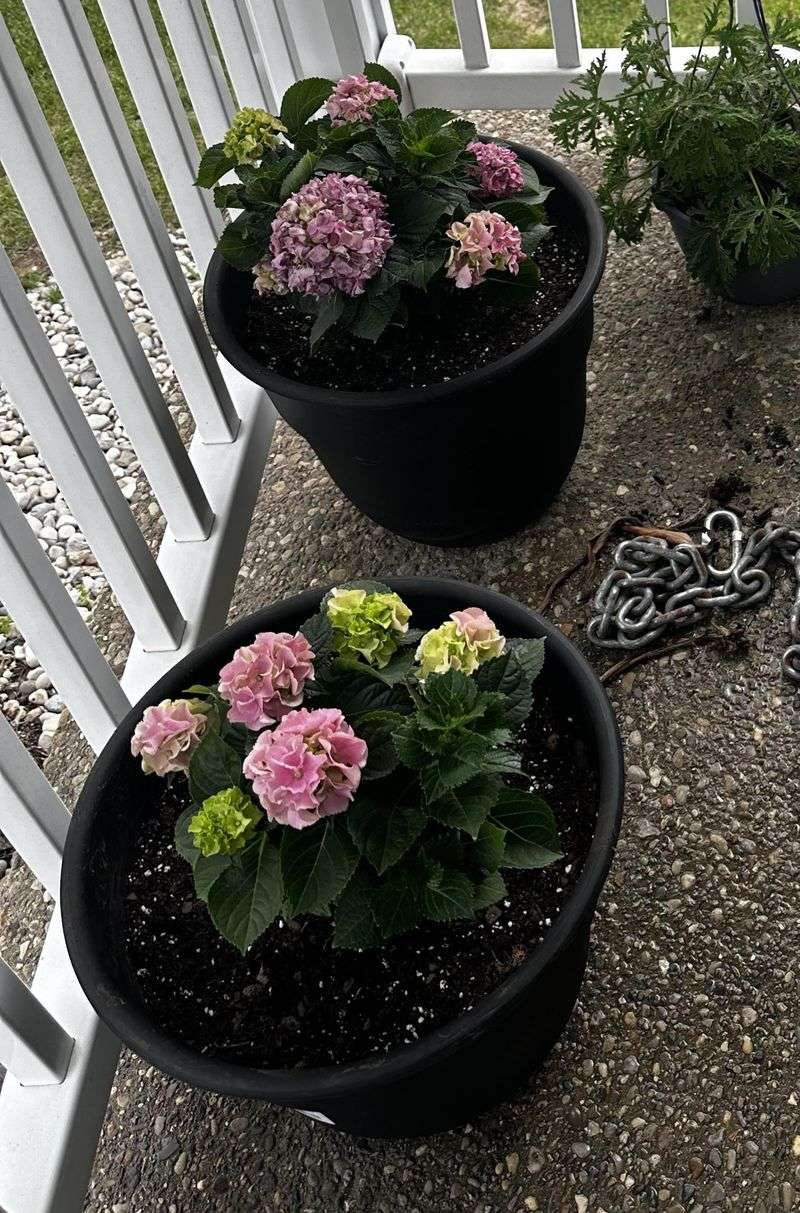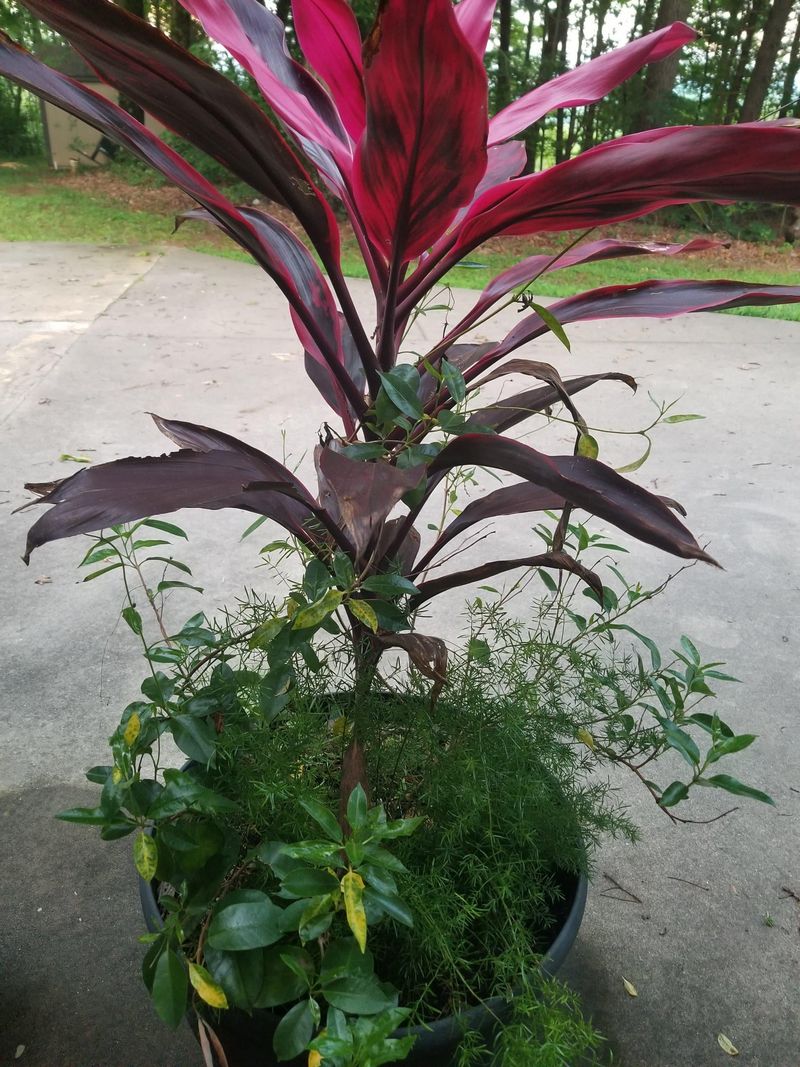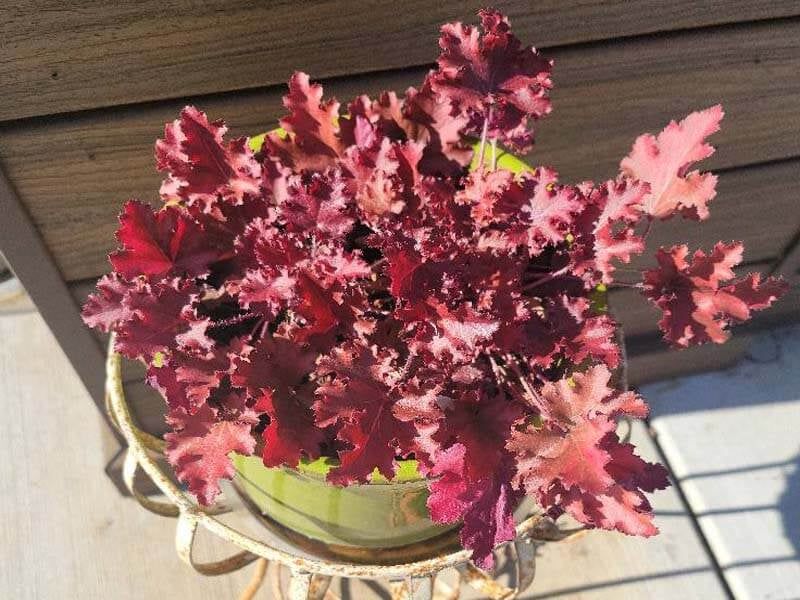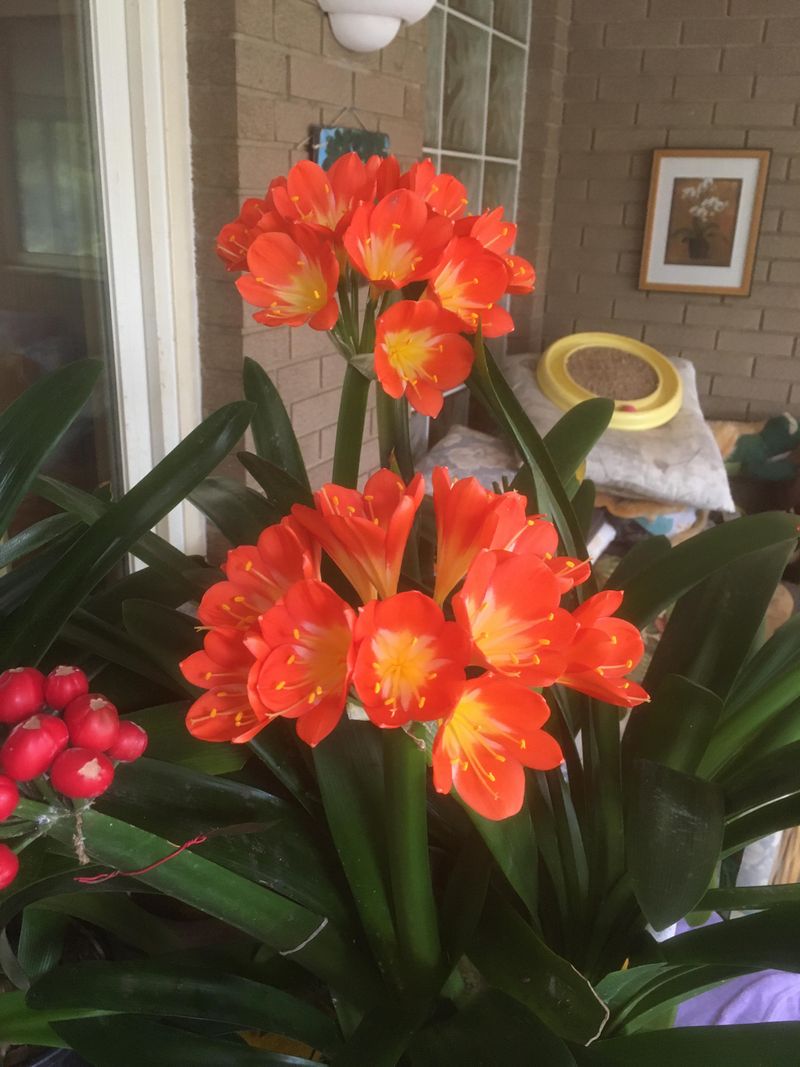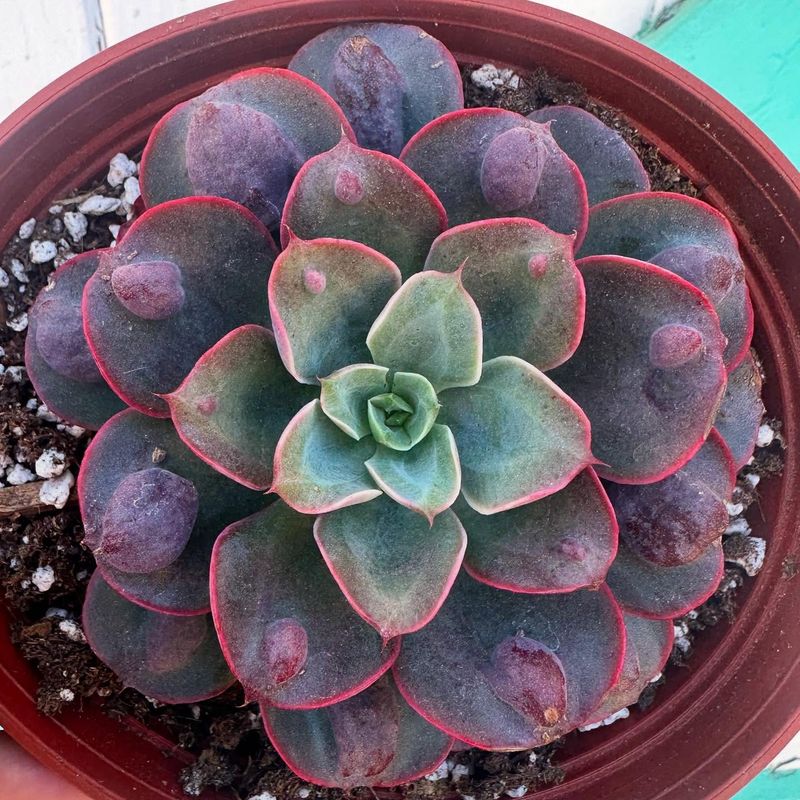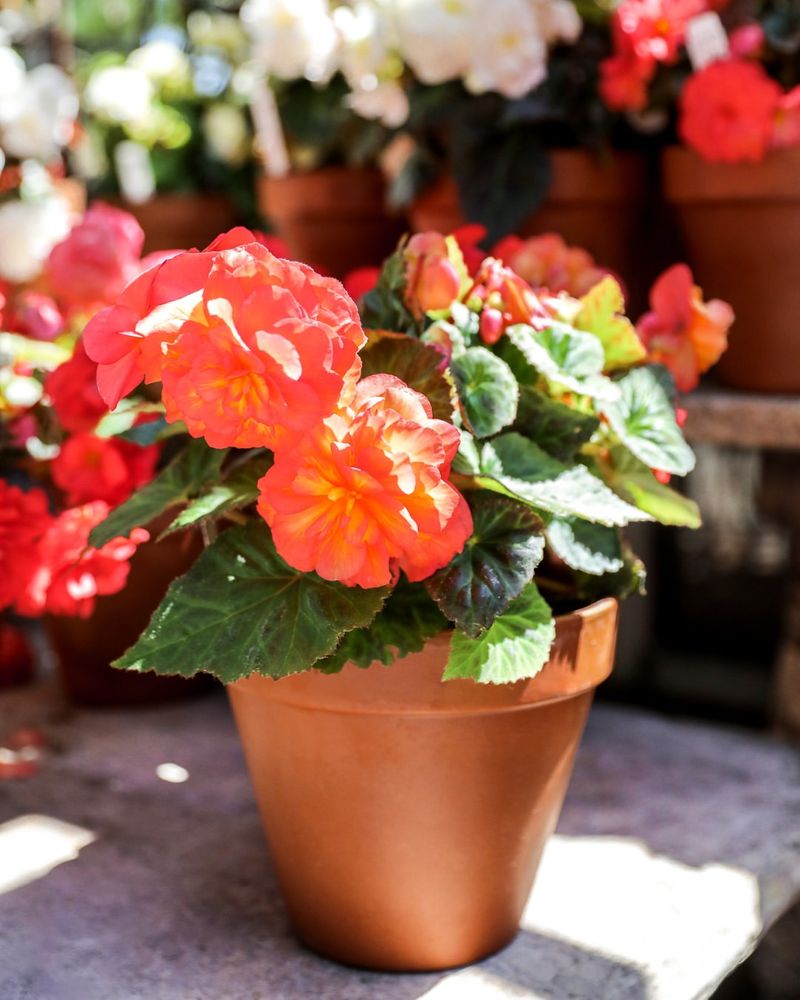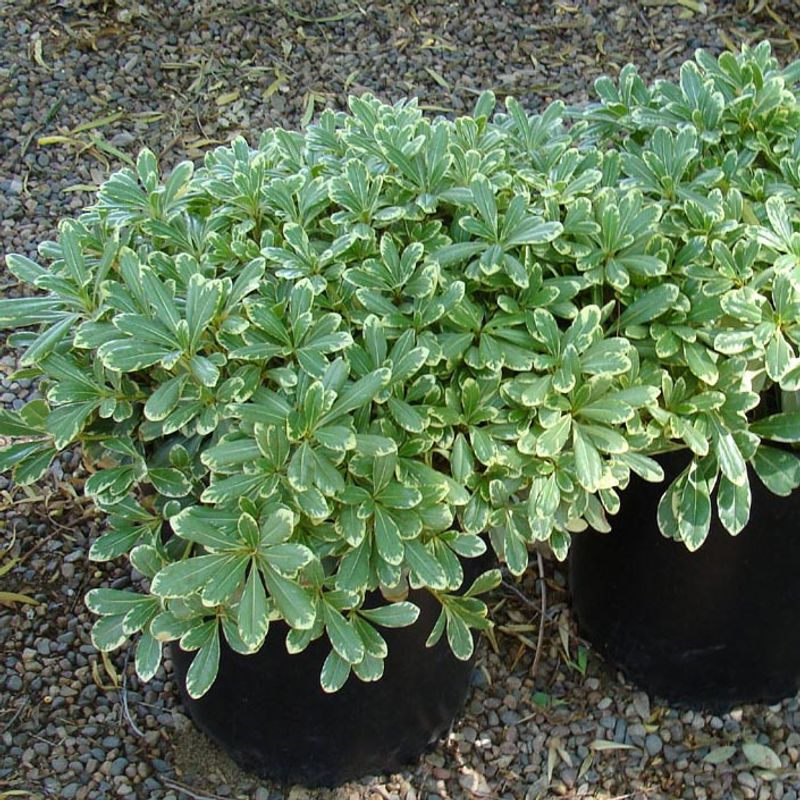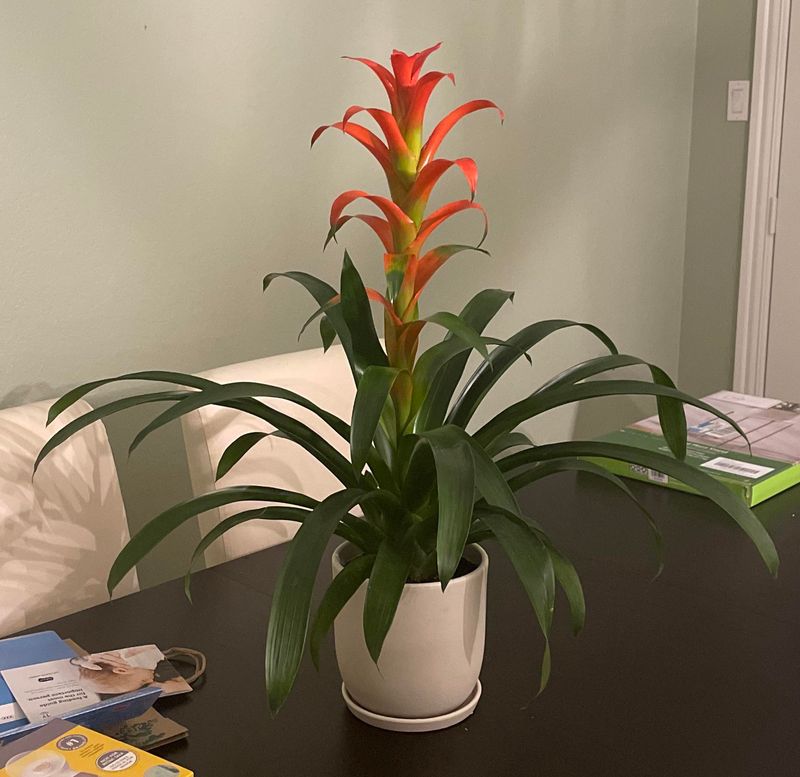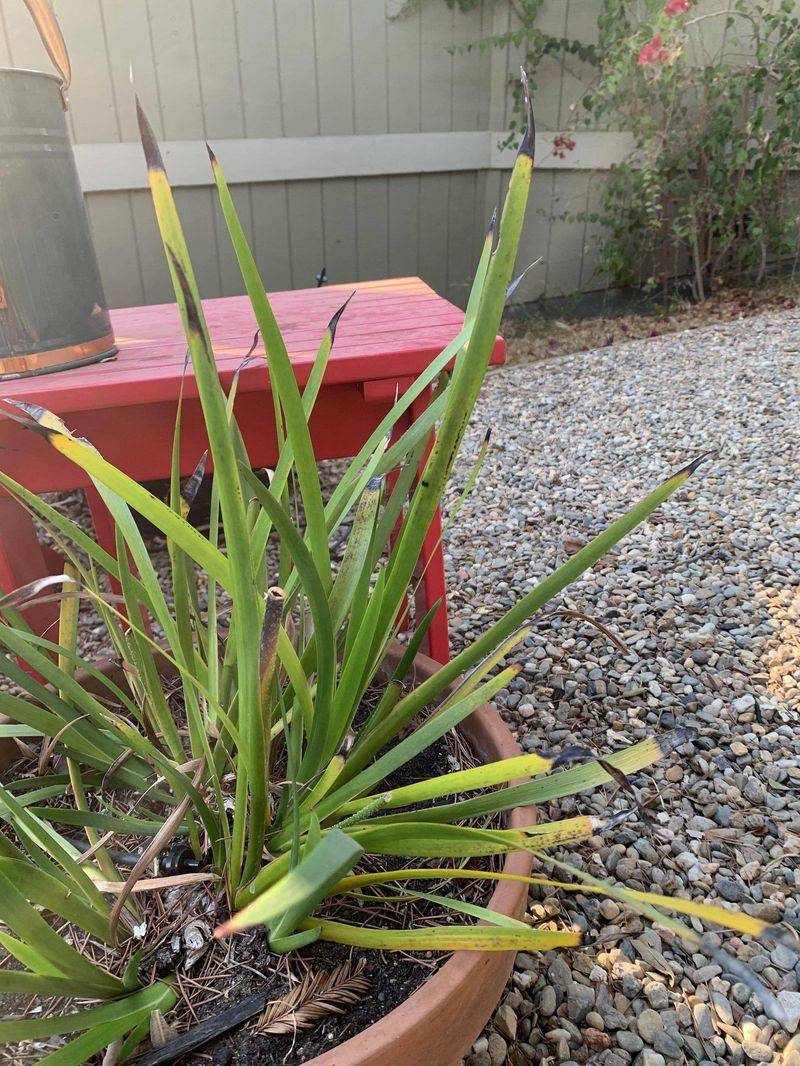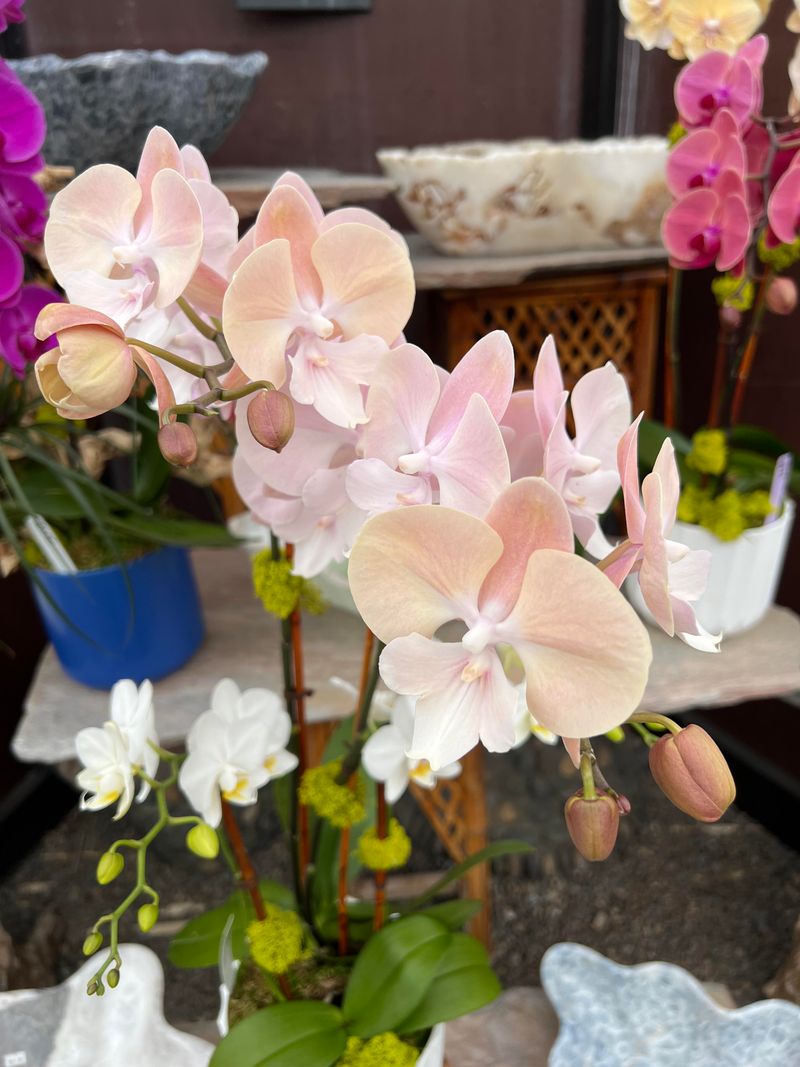California patios offer a wonderful opportunity to create your own little garden oasis, but they often present a challenge: varying light conditions. From sun-drenched Southern California decks to foggy Bay Area balconies, finding plants that can handle both bright sunshine and cooling shade seems impossible.
I’ve spent years experimenting with different plants across my own changing patio spaces. The morning might bring gentle sunshine to one corner, while the afternoon casts long shadows from nearby buildings or trees.
Instead of limiting myself to strictly sun or shade plants, I’ve discovered these versatile options that adapt beautifully to California’s diverse microclimates.
1. Lavender
Surprisingly adaptable to both sunny and partially shaded spots, this Mediterranean native thrives in California’s climate. The fragrant purple blooms attract butterflies while the silvery foliage adds texture to any patio arrangement.
During hot inland summers, a bit of afternoon shade actually helps prevent the plant from getting crispy. My French lavender survived three years in a terra cotta pot that I regularly moved between my sunny balcony rail and a shadier corner.
For the best flowering performance, aim for at least 6 hours of sunshine, but don’t worry if parts of your patio receive less light – lavender forgives easily.
2. Camellia
Often thought of as shade-only plants, many camellia varieties actually perform beautifully in California’s dappled light conditions. Their glossy evergreen leaves provide year-round structure while their winter-to-spring blooms offer color when other plants are dormant.
Morning sun with afternoon protection works perfectly for these elegant shrubs. I’ve had a ‘Shishi Gashira’ camellia in a large pot for years, occasionally moving it around my Sacramento patio as seasons change.
Water deeply but infrequently, and use acidic potting soil to keep camellias happy. Their ability to handle temperature fluctuations makes them ideal for transitional patio spaces.
3. Agave
Bold architectural forms make agaves stunning focal points for California patios regardless of light conditions. Their thick, water-storing leaves withstand both intense sunshine and surprising amounts of shade, though flowering may be reduced in darker spots.
Smaller varieties like Agave attenuata (Fox Tail Agave) or Agave parryi adapt beautifully to container life. The blue-gray coloration intensifies with more sun exposure, creating a striking contrast against terra cotta pots.
My container-grown agaves have moved with me from a sunny San Diego balcony to a partially shaded Bay Area patio without missing a beat – they’re practically indestructible!
4. New Zealand Flax
Dramatic sword-shaped leaves in colors ranging from bronze to variegated cream-and-green make New Zealand flax (Phormium) a stunning addition to California patios. These architectural plants maintain their striking form whether placed in full sun or partial shade.
Coastal gardeners appreciate their salt tolerance and wind resistance. The smaller varieties like ‘Jack Spratt’ or ‘Cream Delight’ fit perfectly in containers without overwhelming the space, creating vertical interest among rounder plant forms.
Last summer, I divided my potted flax and placed the sections in different light conditions across my patio – all thrived, though the one in brighter light developed more intense coloration.
5. Fuchsia
Dangling like tiny dancers, fuchsia blooms bring hummingbirds flocking to California patios. While conventional wisdom places them strictly in shade, many hardy varieties handle morning sunshine beautifully while appreciating afternoon protection.
Fuchsias perform wonderfully in hanging baskets where their cascading flowers can be appreciated at eye level. The ‘Gartenmeister Bonstedt’ variety offers unusual coral-orange tubular flowers and has proven especially adaptable to varied light conditions.
My coastal patio fuchsias receive filtered morning light through a pergola and still bloom continuously from spring through fall. Just remember they’re thirsty plants – check containers daily during warm weather.
6. Aeonium
With rosettes resembling underwater flowers, aeoniums bring sculptural beauty to California patios in both sun and shade. These succulents change their growth habits based on light exposure – becoming more compact and colorful in brighter spots.
Originally from the Canary Islands, they’re perfectly adapted to our Mediterranean climate. Aeonium ‘Kiwi’ develops cream-and-pink variegation in proper light, while the dramatic black-purple Aeonium ‘Zwartkop’ creates striking contrast against lighter plants.
After moving my container collection from a sunny spot to a partially shaded corner, I noticed the rosettes grew larger but maintained their distinctive coloration – proof of their remarkable adaptability.
7. Japanese Maple
Delicate lacy leaves transform California patios into serene retreats, regardless of light conditions. Japanese maples prefer morning sunshine with afternoon protection but adapt surprisingly well to container life in various exposures.
Dwarf varieties like ‘Shaina’ or ‘Beni Kawa’ (with stunning red bark) stay manageable in pots for years. Their seasonal color changes – from spring’s bright emergence to fall’s fiery display – create year-round interest in even the smallest spaces.
My potted Japanese maple has followed me through three different apartments, adjusting to each patio’s unique light patterns. Just ensure consistent moisture and protection from harsh afternoon sun in hotter inland areas.
8. Salvia
Hummingbird magnets with a remarkable tolerance for varied conditions, salvias bring wildlife and fragrance to California patios. While they bloom most prolifically in full sun, many varieties perform admirably with just 4-5 hours of direct light.
Pineapple sage offers fruity-scented foliage plus late-season red blooms, while compact varieties like ‘Hot Lips’ or ‘Mystic Spires Blue’ fit perfectly in containers. Their drought tolerance once established makes them perfect for busy patio gardeners.
Even in my partly shaded San Francisco patio corner, salvias attract hummingbirds all summer long. I simply prune them back by a third after the first bloom flush to encourage another round of flowers.
9. Hydrangea
Contrary to popular belief, many hydrangea varieties thrive in containers across various California patio light conditions. Their bloom colors actually change based on soil pH and light exposure – more acidic soil produces blue flowers, while alkaline conditions create pink blooms.
Reblooming varieties like ‘Endless Summer’ or compact types such as ‘Cityline Paris’ perform beautifully in pots. Morning sun with afternoon shade represents their ideal situation, but they adapt well to different exposures.
My potted hydrangea spent three years on an east-facing apartment balcony before moving to a west-facing patio with filtered afternoon light – it adjusted perfectly after a brief transition period.
10. Cordyline
Bringing tropical drama without tropical demands, cordylines adapt beautifully to California’s diverse patio conditions. Their sword-like leaves in shades of burgundy, pink, or variegated cream create vertical interest in container groupings.
More sun exposure intensifies leaf color, but these architectural plants maintain their striking form even in shadier spots. Cordyline ‘Electric Pink’ offers especially vibrant coloration, while ‘Torbay Dazzler’ features cream-striped foliage that brightens darker corners.
When I relocated my patio cordyline from a sunny spot to a more sheltered location, it actually seemed happier – developing broader, more colorful leaves while maintaining its distinctive upright form.
11. Heuchera
Grown primarily for their colorful foliage, heucheras (coral bells) transform ordinary California patios into extraordinary spaces. Their ruffled leaves in shades from caramel to purple to silver maintain vibrant coloration in both sun and shade.
Coastal gardeners find them especially adaptable, as they handle both fog and sunshine with equal grace. ‘Caramel’ offers warm amber tones, while ‘Obsidian’ provides nearly black leaves that make neighboring plants pop.
During our recent heat wave, I moved my container heucheras to a shadier spot temporarily, then returned them to their sunnier location once temperatures normalized – they never skipped a beat!
12. Clivia
Elegant strappy leaves topped by clusters of trumpet-shaped orange or yellow blooms make clivias standout performers for California patios. These South African natives actually prefer the dappled light conditions found on many patios.
Thriving in containers for years with minimal care, they bloom most prolifically when slightly pot-bound. Their tolerance for irregular watering makes them perfect for busy patio gardeners or frequent travelers.
My grandmother’s clivia followed our family through three homes across California, from a foggy San Francisco balcony to a sunny Southern California courtyard. It reliably produces stunning orange blooms every spring regardless of its location.
13. Echeveria
Resembling stone flowers, echeverias create living sculptures across California patios in various light conditions. Their rosette form and powdery blue, pink, or purple coloration provides year-round interest even when not in bloom.
While they prefer bright conditions, many varieties tolerate partial shade, just developing slightly looser rosettes. Echeveria ‘Perle von Nürnberg’ develops stunning purple-pink coloration even in less than ideal light.
After rearranging my patio last spring, I discovered my container echeverias actually preferred their new location with bright, indirect light rather than the direct afternoon sun they previously received – they developed more intense coloration!
14. Begonia
From delicate angel wing varieties to robust rhizomatous types, begonias offer incredible diversity for California patio containers. While traditionally considered shade plants, many newer varieties handle considerable sun exposure, especially with morning light and afternoon protection.
Rex begonias bring dramatic foliage with swirling patterns in silver, burgundy, and green. Meanwhile, tuberous types offer rose-like blooms in vibrant colors throughout summer and fall, perfect for adding color to transitional light areas.
My collection thrives in self-watering containers placed around my patio’s perimeter, where light conditions vary dramatically throughout the day. They’ve proven far more adaptable than their delicate appearance suggests!
15. Pittosporum
Creating structure and evergreen stability, pittosporums adapt beautifully to California’s varied patio light conditions. Their dense growth habit makes them perfect natural screens or focal points in larger containers.
Variegated varieties like ‘Mojo’ or ‘Marjorie Channon’ brighten shadier corners while maintaining their distinctive cream-edged foliage even in considerable sun. Their subtle fragrance when blooming adds another sensory dimension to patio spaces.
My container-grown pittosporum has served as a movable privacy screen for three years, shifting positions as needed when entertaining. It’s handled everything from morning-only sun to nearly full-day exposure without complaint.
16. Bromeliads
Bringing tropical flair without tropical demands, bromeliads offer extraordinary adaptability across California patio conditions. Their structural rosettes collect water naturally, while their colorful central “cups” (actually modified leaves) provide months of vibrant color.
Bright indirect light produces the most vivid coloration, but many varieties tolerate both deeper shade and considerable sun exposure. Aechmea, Neoregelia, and Vriesea genera contain numerous patio-friendly options that thrive in containers.
After inheriting a neglected bromeliad collection, I was amazed how quickly they recovered when placed in various spots around my patio – from bright filtered areas to morning-sun-only corners.
17. Kangaroo Paw
Fuzzy, finger-like blooms in sunset hues atop slender stems make kangaroo paws uniquely captivating patio plants. Native to Australia, they share California’s Mediterranean climate and adapt surprisingly well to container culture in varied light.
While they bloom most prolifically with 6+ hours of sun, many varieties perform admirably with just morning sunshine. Their drought tolerance once established makes them perfect for busy patio gardeners in both coastal and inland areas.
My container-grown ‘Bush Gem’ varieties have followed me from a sunny Southern California apartment to a more sheltered Bay Area space, adjusting their growth habits while continuing to produce their distinctive velvety flowers.
18. Phalaenopsis Orchid
Surprisingly adaptable to outdoor California patio conditions, phalaenopsis orchids thrive in protected spots with bright, indirect light. Their elegant arching sprays of blooms can last for months, while their thick, glossy leaves provide year-round structure.
Morning sun with afternoon protection represents their ideal situation, mimicking their natural epiphytic growing conditions. Group several together in decorative containers for maximum impact – they actually prefer being slightly crowded.
Last year, I experimented by moving my indoor orchid collection to a sheltered patio corner with dappled light. They not only survived but thrived, producing more blooms than ever before in our mild coastal climate.

